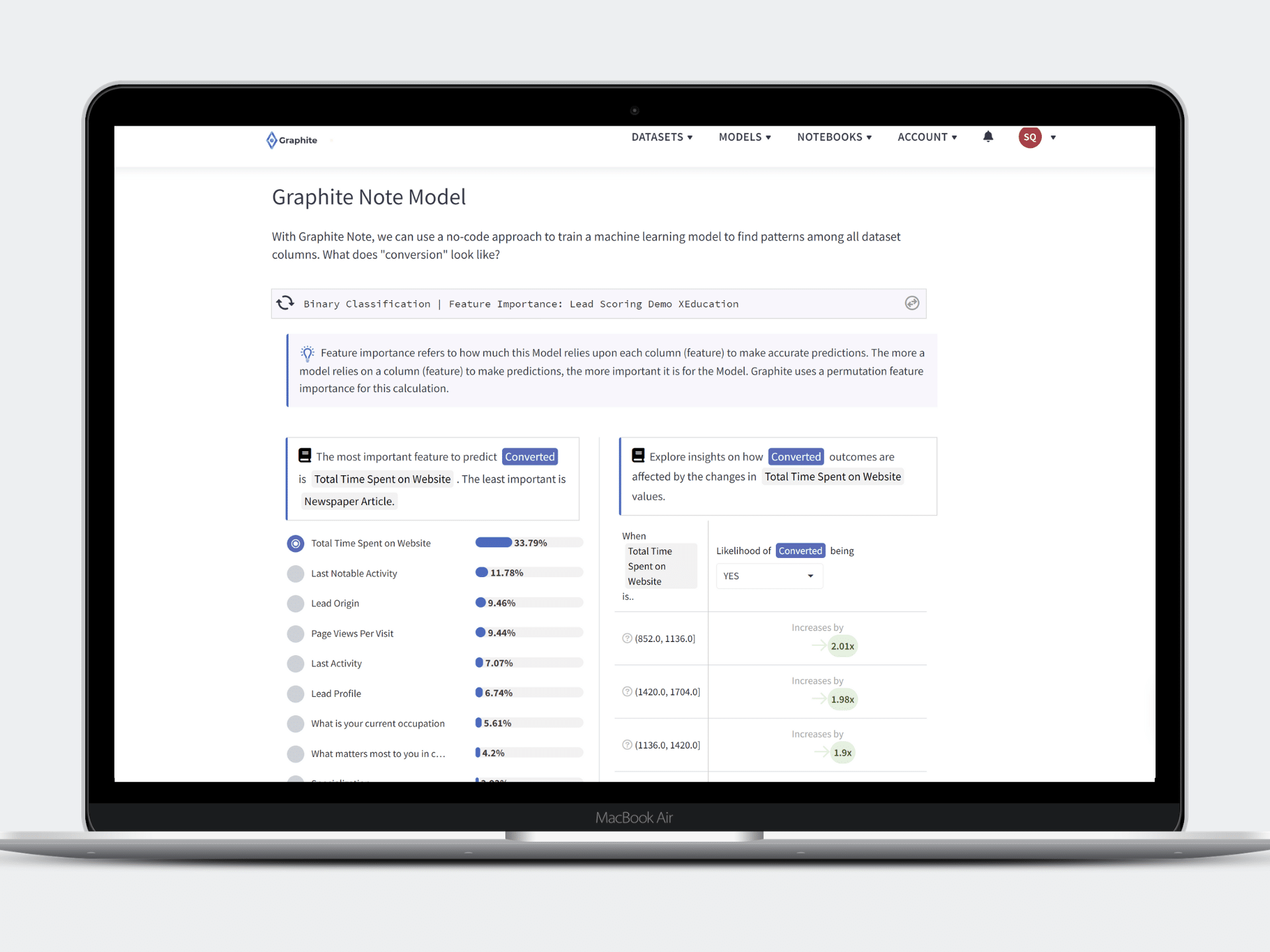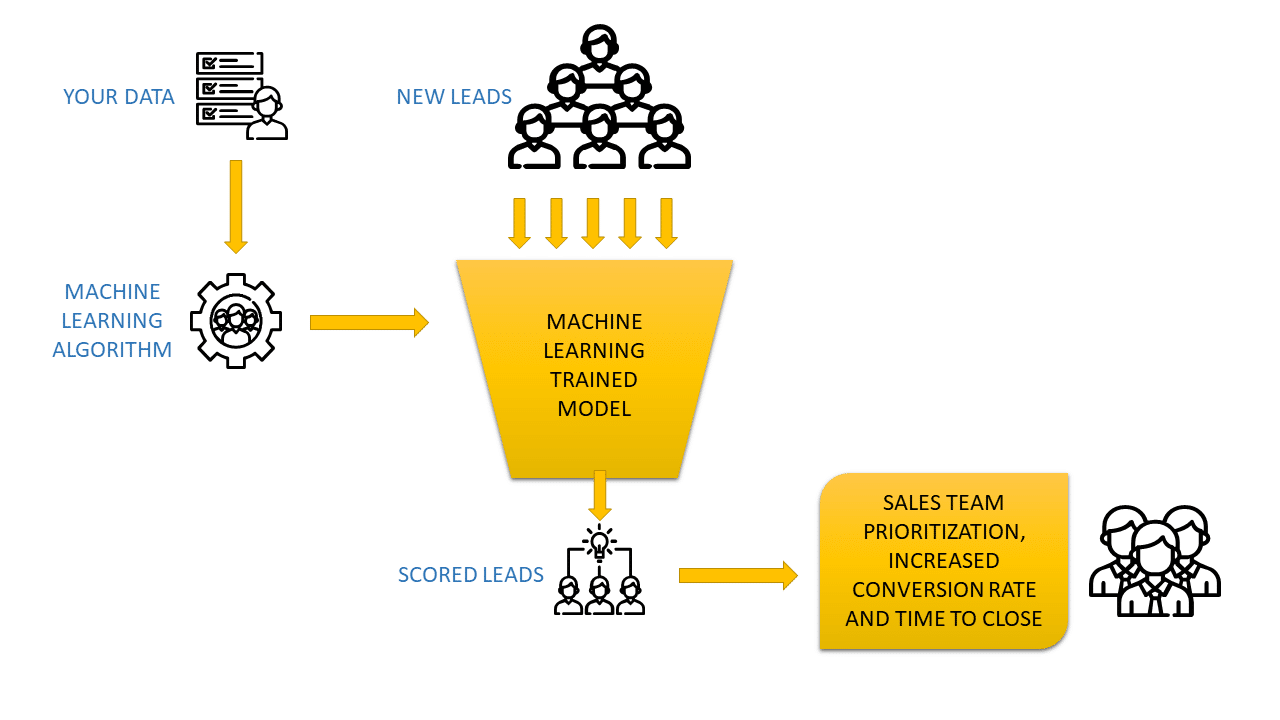Staying ahead of the curve is essential for your sales and marketing teams. One key way to gain an advantage is through the use of predictive lead scoring. Using data-driven insights, predictive lead scoring empowers you to identify and prioritize prospects that are most likely to convert into customers. In this article, we explore the importance of predictive lead scoring in sales and marketing, and how it can revolutionize your business.
The Evolution of Lead Scoring
Lead scoring has come a long way from its manual origins. Traditional lead scoring systems relied heavily on subjective criteria and point values assigned to various actions or attributes. While this approach provided some structure, it often fell short in accurately predicting which leads were most likely to convert.
Predictive lead scoring models have emerged as a more sophisticated and effective alternative. The predictive models analyze vast amounts of data points, including demographic data, firmographic data, and behavioral data, to create a comprehensive lead scoring model. Incorporating machine learning algorithms, the machine learning models can identify patterns and correlations that humans might miss, resulting in more accurate lead scores.
Understanding Predictive Lead Scoring
Bridging the Gap Between Marketing and Sales
One of the biggest challenges businesses face is aligning their marketing and sales efforts. Marketing teams generate leads and pass them on to sales, but often there is a disconnect between the two departments. Predictive lead scoring acts as a bridge, bringing together these two critical teams. Using data analytics and machine learning algorithms, predictive lead scoring gives your business valuable insights that empower both marketing and sales to work in tandem towards a common goal.
With predictive lead scoring, marketing teams can better understand the characteristics and behaviors of their target audience. Analyzing historical data, your marketing teams can identify patterns and trends that indicate which leads are most likely to convert. Armed with this information, your marketing teams can tailor their campaigns to attract high-value prospects, resulting in more qualified leads for the sales team.
Predictive lead scoring also enables your sales teams to prioritize their efforts and focus on leads with the highest conversion potential. Automating the lead qualification and scoring process, your sales teams can save valuable time that would have otherwise been spent on manual evaluation. This time-saving benefit enables your sales representatives to dedicate more time to building relationships with qualified leads, increasing the chances of closing deals and driving revenue.
The Benefits of Predictive Lead Scoring
Predictive lead scoring automates calculating your lead score by analyzing vast amounts of historical data to identify patterns and trends. This saves time and ensures that your sales team focuses on the leads that are most likely to convert. With the help of predictive lead scoring, your sales team can prioritize their efforts and increase their efficiency, ultimately resulting in higher conversion rates and revenue for your business. Your team doesn’t need to spend time scoring leads anymore. A predictive model can calculate your lead score for you. AI-powered tools can analyze vast amounts of data and identify complex patterns that human analysts might miss. The advanced scoring models consider a wide range of factors, including online behavior, engagement scores, and intent data, to provide highly accurate lead scores.
The algorithms behind predictive lead scoring can quickly analyze data points such as demographics, firmographics, and online behavior to identify the most promising leads. Your sales team can spend their time and energy on engaging with leads that have a higher likelihood of becoming paying customers. By quickly identifying high-value prospects, predictive lead scoring accelerates the sales cycle and allows for more effective resource allocation. This rapid turnaround time enables your sales teams to reach out to leads when they are most engaged and receptive.
Predictive lead scoring provides you with real-time insights, allowing your sales team to act swiftly. Instead of waiting for manual lead scoring results, predictive lead scoring delivers instant feedback. Your sales representatives can promptly follow up with leads, increasing the chances of conversion and reducing the risk of losing potential customers to competitors.
Predictive lead scoring minimizes the risk of errors by following a predefined set of rules and algorithms, ensuring objective evaluation of all leads. This standardized approach provides a fair and reliable assessment of conversion potential.
Predictive lead scoring adapts and evolves over time, allowing for continuous refinement of strategies and improved accuracy. This ongoing improvement leads to better alignment between marketing and sales, cultivating a collaborative environment and driving sustainable growth.
Using behavioral segmentation, predictive lead scoring enables more targeted and personalized marketing campaigns. This granular approach allows for higher scores to be assigned to leads exhibiting behaviors indicating a higher likelihood of conversion.
Integrating marketing automation tools, CRM systems, and data analytics platforms creates a seamless flow of data, ensuring accurate and efficient lead scoring. This streamlined approach enables automation of repetitive tasks, reducing the risk of human error.
Using advanced analytics and machine learning algorithms, predictive lead scoring significantly improves the accuracy of lead quality assessments compared to traditional manual methods. The automation inherent in predictive lead scoring systems saves valuable time for your sales teams. Predictive lead scoring enables better alignment between your marketing and sales departments by providing a shared framework and language for lead evaluation. This alignment enables seamless collaboration and leads to improved overall performance. Most importantly, predictive lead scoring’s ability to identify high-quality leads more effectively leads to increased conversion rates, enabling your business to close more deals. Using the power of data-driven insights, predictive lead scoring empowers your company to make more informed decisions, optimize your sales processes, and drive sustainable growth in an increasingly competitive marketplace.
Implementing Predictive Lead Scoring
Predictive lead scoring uses advanced algorithms and machine learning to eliminate human error and subjective judgment in lead evaluation. Implementing this data-driven method, your business can accurately identify high-value prospects, streamline operations, and achieve better results.
Key Steps for Implementation
To implement an effective predictive lead scoring system, consider the following steps:
- Define Your Ideal Customer Profile: Clearly outline the characteristics of your target audience and ideal customer to inform your lead scoring criteria.
- Gather Relevant Data: Collect and integrate data from various sources, including CRM systems, marketing automation platforms, and third-party data providers.
- Choose the Right Lead Scoring Software: Select a predictive lead scoring tool that aligns with your business needs and integrates well with your existing systems.
- Develop and Refine Your Model: Work with your marketing and sales teams to develop and continuously refine your lead scoring model based on real-world results and feedback.
- Monitor and Optimize: Regularly review your lead scoring system’s performance and make adjustments as needed to ensure ongoing effectiveness.

Integration with Marketing Automation
To maximize effectiveness, integrate your lead scoring system with your marketing automation platform. This integration enables seamless lead nurturing and enables your marketing team to deliver targeted content and campaigns based on lead scores. By aligning lead scoring and marketing automation efforts, you can create a more personalized and effective customer journey.
Sales and Marketing Alignment
Predictive lead scoring significantly improves alignment between your sales and marketing teams. Providing a common framework for evaluating lead quality, it helps bridge the gap between these important departments. Your marketing teams can use lead scores to determine when a lead is ready for sales, while sales teams can prioritize their efforts based on these scores, leading to more efficient resource use and improved overall performance.
Measuring Success of Your Predictive Lead Scoring
To ensure the effectiveness of your lead scoring system, track key metrics:
- Conversion Rates: Monitor how lead scores correlate with actual conversions.
- Sales Cycle Length: Assess whether higher-scored leads move through the sales funnel more quickly.
- Revenue Impact: Evaluate the impact of lead scoring on overall revenue generation.
- Sales Team Feedback: Gather input from your sales reps on the quality of leads they receive.

Conclusion
Predictive lead scoring gives you data-driven insights, so you can identify high-value prospects, streamline your operations, and achieve better results. A no-code predictive analytics platform like Graphite Note can help you implement predictive lead scoring effortlessly. With its user-friendly interface and powerful features, Graphite Note enables businesses of all sizes to harness the transformative power of predictive lead scoring.

Staying ahead of the curve is essential for sales and marketing teams. One key way to gain an advantage is through the use of predictive lead scoring. By leveraging data-driven insights, predictive lead scoring allows businesses to identify and prioritize prospects that are most likely to convert into customers. In this article, we will explore the importance of predictive lead scoring in sales and marketing, and how it can revolutionize your business.






